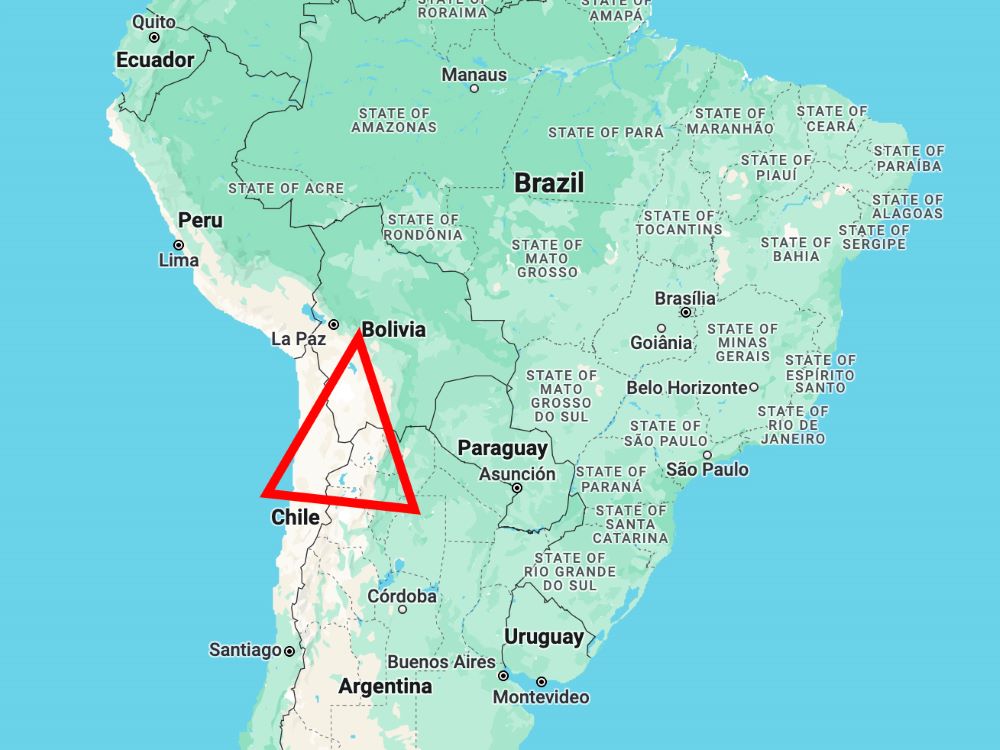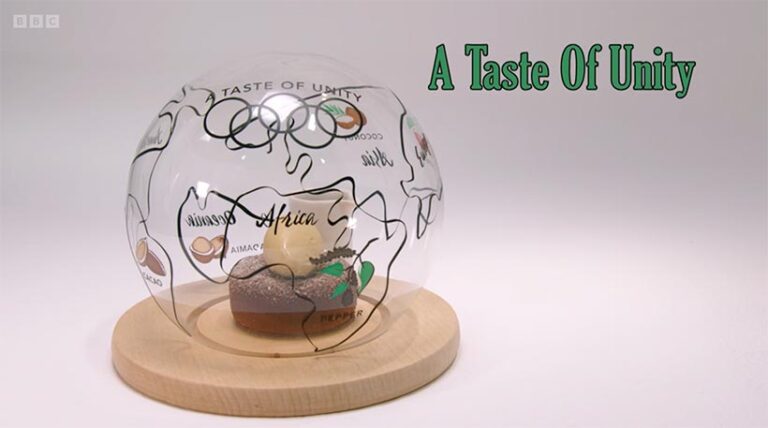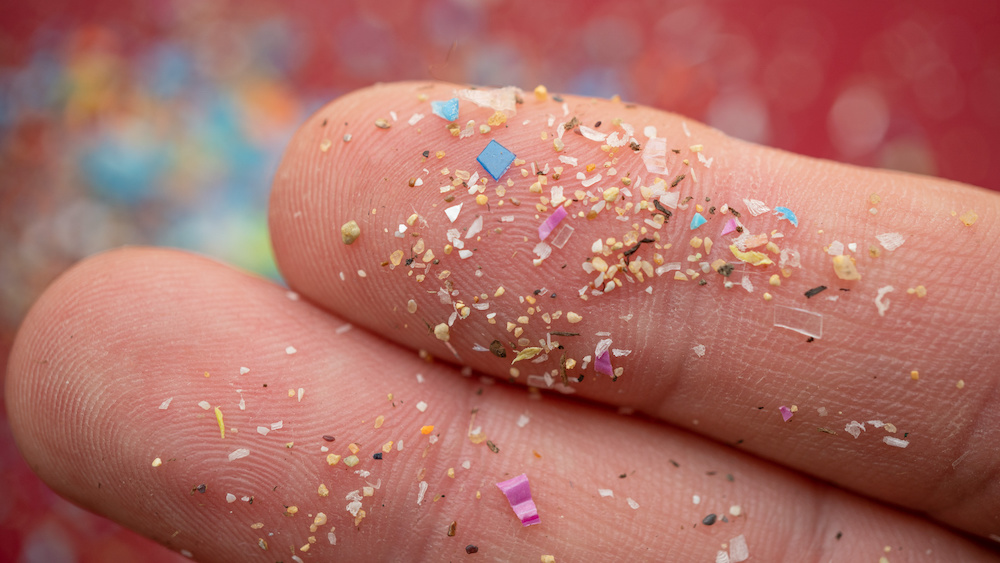뉴스&스피킹(영자신문)
하루 10분이면 영어에 대한 두려움을 극복하고 누구나 유창하게 영어를 구사하실 수 있습니다.
-
 US Sports Fans Hope AI Will Help with March Madness Brackets The American college basketball tournaments known as “March Madness” begin this week. College basketball, or National Collegiate Athletic Association (N.C.A.A.) basketball, is very popular in the United States. In parts of the country it is even more popular than professional basketball.
US Sports Fans Hope AI Will Help with March Madness Brackets The American college basketball tournaments known as “March Madness” begin this week. College basketball, or National Collegiate Athletic Association (N.C.A.A.) basketball, is very popular in the United States. In parts of the country it is even more popular than professional basketball.
And, many people like to try to guess who will win the many games played over the next few weeks of competition. Sixty-seven games will be held for both men and women.
A chart that shows the sequence of games is called a bracket. Thousands of fans in the U.S. compete with each other to correctly predict the most outcomes of each game.
Today, more people are using artificial intelligence, or AI, to help them fill their brackets. Using AI for bracketing in the tournament is not so new. Even so, the yearly bracket competitions still provide many surprises for computer science experts who have spent years creating their models using past tournament results.
The researchers have found that machine learning alone cannot quite solve for the limited data and unpredictable human elements of the tournament.
A normal fan may spend a few days this week deciding which team might win a few games in the tournament. But some computer experts are going after even more detailed information. They are using complex math to find the best model for predicting success in the tournament. Some are using AI to perfect their codes or decide which qualities of the team can best predict their competitive future.
The chances of creating a perfect bracket are extremely low for any competitor, however advanced their tools may be. An “informed fan” making choices based on past results has a 1 in 2 billion chance at perfection, says Ezra Miller. He is a mathematics professor at Duke University.
Artificial intelligence is likely very good at determining the probability that a team wins, Miller said. But even with the models, he added that the “random choice of who’s going to win a game that’s evenly matched” is still a random choice.
For the 10th straight year, the data science community Kaggle is hosting “Machine Learning Madness.” In traditional bracket competitions, people simply write each team they think will win. But “Machine Learning Madness” requires users to enter a percentage representing their level of confidence that a team will advance.
Kaggle provides a large data set from past results for people to develop their algorithms. That includes information on a team's free-throw percentage, turnovers and assists. Users can then turn that information over to an algorithm to find the statistics most predictive of tournament success.
“It’s a fair fight. There’s people who know a lot about basketball and can use what they know," said Jeff Sonas. He is a statistical chess analyst who helped found the competition. "It is also possible for someone who doesn’t know a lot about basketball but is good at learning how to use data to make predictions.”
No method will include every element at play on the court. There is a balance between modeling and intuition, said Tim Chartier, a Davidson University bracket expert.
Chartier has studied brackets since 2009. He developed a method that largely depends on team success on home court and away, performance in the second half of the season and difficulty of schedule. But he said the NCAA Tournament's historical results provide an unpredictable and small sample size. That is a difficulty for machine learning models, which use large sample sizes.
Chartier's goal is never for his students to reach perfection in their brackets. His own model still cannot account for Davidson's 2008 unexpected admission into the “Elite Eight” level of the tournament.
In that mystery, Chartier finds a useful reminder from March Madness: "The beauty of sports, and the beauty of life itself, is the randomness that we can't predict."
I’m Dan Novak.View -
 In South America’s ‘Lithium Triangle,’ a Struggle Between Tradition, Industry An area stretching across Argentina, Bolivia and Chile forms what is called the “Lithium Triangle.” The earth there is rich in lithium, a necessary metal in creating batteries for electric cars and other products.
In South America’s ‘Lithium Triangle,’ a Struggle Between Tradition, Industry An area stretching across Argentina, Bolivia and Chile forms what is called the “Lithium Triangle.” The earth there is rich in lithium, a necessary metal in creating batteries for electric cars and other products.
The international effort to develop technologies that do not use oil, gas or coal requires huge amounts of lithium. But small native communities in the Lithium Triangle are worried. They fear their way of life will disappear as industry pushes for new lithium mines. The mining takes place in low, dry areas known as “salt flats.”
Stories from Argentina
Irene Leonor Flores de Callata is 68 years old. She lives in a desert area of Argentina where she keeps llamas and sheep. The life includes searching for fresh water on a usual basis.
Her town is one of 38 that surround salt flats called the Guayatoyoc Lagoon and Salinas Grandes. People in the area earn some money from vacationing visitors and salt harvesting. They are a native people known as the Kolla.
Flores de Callata worries that if the mining expands in her area, there will be no water. She said: “What will we do if we don’t have water? If the mines come, we’ll lose our culture, we won’t be left with anything.”
Lithium’s value
Between 2021 and 2023, the price for one ton of lithium almost tripled in the U.S., reaching $46,000. In China, a main buyer of lithium reportedly paid $76,000 for one ton of the metal last year. Some call the metal “white gold.”
Mining companies around the world are turning their attention to the Lithium Triangle. World leaders are also pushing for lithium production. In the United States, President Joe Biden said he aimed to have electric vehicles make up half of all sales in America by 2030. That would amount to about 8 million electric vehicles. U.S. Secretary of State Antony Blinken has said: “Argentina is poised to play a critical role in building supply chains for critical minerals that will drive the economy of the 21st century, particularly things like lithium.”
Although prices have recently dropped because of oversupply, experts say worldwide demand is likely to rise in the future.
Environmental concerns in Chile
Two lithium mining companies operate in Chile, which borders Argentina to the west. SQM is a Chilean business and Albermarle is an American one. Valentín Barrera, a spokesman for SQM, said lithium is an answer to the problem climate change. “We want to grow, understanding that it’s needed to mitigate climate change.”
In Chile, SQM pumps thousands of liters of salt water out of the ground and then lets the water dry out in pools. The solids in the salty water contain lithium. The pools evaporate, leaving a solid substance that is collected and purified.
Environmentalists, however, are concerned that the mining in the area will harm animals like flamingos and other life. As in Argentina, mining has brought criticism and legal cases. Local people want influence in decisions about the land.
In 2016, an investigation of SQM found that the company had used more water in their mining process than the law permitted. Later, the company was ordered to pay $51 million to mitigate damage caused by six incidents, including the polluting of fresh water wells.
Barrera said the court actions and criticism come from “disinformation.” He blamed the state-run copper mines, which also use a lot of water.
An Albermarle spokesperson said the underground salt water “is not water” because it is not drinkable.
The Associated Press (AP) spoke to a number of scientists. They said it is hard to believe that industrial water use does not affect the environment. They said water pumping can pollute fresh water with salty water and dry out the surrounding area.
Ingrid Garcés studies water at Chile’s University of Antofagasta. She said the salt flats are important for different kinds of animal and plant life. She said the water in the salt flats is not drinkable but is connected to other water sources and is important to natives.
A 2020 report from the United Nations said that mining has used up 65 percent of the water in Chile’s Atacama Salt Flat causing pollution and environmental damage, causing natives to leave “ancestral settlements.”
In April of 2023, Chilean President Gabriel Boric announced a plan to increase government control of lithium mines. The government told the AP the plan would help control water use and spread wealth to more people. The move had the effect of pushing mining companies to invest in neighboring Argentina.
An opportunity and contradiction
Miguel Soler is secretary of mining in northern Argentina. He said, “In Argentina, (Chile’s decision) is an opportunity.”
More than 30 companies are officially seeking permission to mine in the Guayatoyoc Lagoon and Salinas Grandes areas in Argentina. Local people are opposing the business effort.
The llama herder Flores de Callata and her native Kolla people have fought against mining and brought long legal battles to halt projects in the past also.
“We are guardians of the highlands,” said Flores de Callata, “We defend our land…”
Last summer, the local government changed laws to limit the ability of groups to protest against the expansion of mining. Alicia Chalabe, an environmental lawyer representing the communities, said the change to local law violates international law. She said there is a lot of “pressure to exploit lithium for electric vehicles.” But she added, while lithium is important worldwide, “so is the resistance of these communities. They’re not alone.”
Flores de Callata lives in the small town of Tusaquillas next to the wide salt flats where mining might take place in the future. She has a small group of farm animals and lives in a home with dried mud walls that she and her husband built. She wonders what will be left in 20 years.
“If the mines come, we’ll have money for a time. But then our grandchildren, our great-grandchildren—they’re the ones who will suffer,” she said.
Generations of Ramon Torres’ family herded goats near a town close to Chile’s Atacama Salt Flats. But when companies started mining lithium in the early 1980s, Torres took a job as a miner and started saving money.
Today, he uses his wireless phone as he sits next to his small home. He bought the house and his device with his earnings from mining.
“There is development, but there’s also the water issue. And they contradict each other,” Torres said. “Because everyone needs money, everyone also needs the basics, like healthcare and education.”
I’m Mario Ritter, Jr.
And I'm Caty Weaver.View -
 Marriages in South Korea Rise Slightly after Years of Decrease The number of marriages in South Korea rose in 2023 for the first time in more than ten years.
Marriages in South Korea Rise Slightly after Years of Decrease The number of marriages in South Korea rose in 2023 for the first time in more than ten years.
The increase came after the pandemic which forced some couples to delay marriage plans. But the data did not point to a continued increase in the aging country.
The small rise in marriages last year comes as its fertility rate continued to decrease. South Korea’s fertility rate, or the average number of children born per woman, is already the world’s lowest. It is falling because women are concerned about their careers, the cost of raising children, or are deciding not to have babies.
Government data showed a total of 193,657 couples got married last year. That is up 1.0 percent from 191,690 a year earlier. It is the first increase since 2011.
That compares with a 0.4 percent drop in 2022. That was when South Korea started to ease restrictions on social gatherings put in place during the COVID-19 pandemic. The restrictions saw the number of marriages decrease 9.8 percent in 2021 and 10.7 percent in 2020.
The 2023 number of marriages, however, remains well below the 239,159 marriages seen in 2019. And that compares to a yearly number of more than 320,000 recorded 10 years earlier.
A government official said that couples delaying marriage was a reason for more marriages in the second half of 2022 and the first half of 2023.
"In the second half of 2023, however, marriages fell year-on-year, indicating that people who had been delaying marriage due to COVID-19 have now mostly got married," the official told reporters.
The 2023 increase was also well below the increases seen in nearby China. Marriages in China rose 12.4 percent last year. That happened as more couples got married after delays caused by the pandemic.
Most South Koreans say high housing costs are the biggest reason for getting married. Many also see marriage as the first step before having a baby in the Asian country.
The Yonhap news agency reported a recent study of 500 South Koreans aged between 19 and 23. It showed that 50.4 percent of those asked did not plan on getting married or having children.
The government says it will take “extraordinary measure” to deal the low birth rate. Political parties are promising public housing and easier loans for young South Koreans ahead of the April legislative election.
Marriages with a foreign national greatly increased for a second year, increasing 18.3 percent to 19,717.
I’m Gregory Stachel.View -
 A Taste of Unity Editor's note: This story is one of the winning entries from the "Teach Us about Ukraine" writing contest sponsored by VOA Learning English and GoGlobal.
A Taste of Unity Editor's note: This story is one of the winning entries from the "Teach Us about Ukraine" writing contest sponsored by VOA Learning English and GoGlobal.
My name is Olha Balukh, and I have been teaching English for 19 years in Vinnytsia, Ukraine.
In a small corner of Lyceum 20, a type of school comprising primary and secondary ones, in Vinnytsia, Ukraine, students, teachers and community members recently gathered as the aroma of food wafted through the air.
It was not just a usual school event. It was a celebration of varenyky, the beloved Ukrainian dumplings.
Varenyky is much more than a delicious Ukrainian dish. The food represents the heart and soul of a nation. It is a sign of hospitality, unity, and tradition, making it perfect for a school festival to bring people together.
Every year, schools across Ukraine come alive with the spirit of unity when different festivals are organized. This year, the festival in the Lyceum served several purposes. In addition to bringing the community together, it was organized to provide much-needed assistance to children in need and the brave men and women in the army.
Due to the war a lot of people, especially children, were forced to flee from the eastern parts of the country. They lost their parents and friends, houses and other belongings. So, they need both psychological and financial help.
In a perogy festival, students, parents, and teachers worked to prepare several kinds of foods, including dumplings. The school became a center of culinary creativity, with everyone working together to create the tastiest varenyky. The place of education became a colorful market decorated with pumpkins and snowball trees. Food and dumplings included many fillings, from classic potato and cheese to sweet fruit-filled varieties, salmon, ricotta, herring, and beans.
Beyond food, the perogy festival was also a beacon of hope for those who need it most.
Children, who are often the most vulnerable members of society, received support from this festival. Andriy Nazarenko (grade 5-D) moved to Vinnytsia from Bakhmut. This town is completely destroyed nowadays. He was excited to take part in the event.
“I did not expect to get such support from my new teachers and classmates. I am really touched,” said the boy.
Money raised from the festival also went to soldiers who defend the nation and provide equipment and supplies for the Ukrainian military.
Through their involvement in the festival, students learned that they can make a difference in the world, no matter their age.
I'm Andrew Smith.View -
 Are Tiny Plastic Particles in Our Bodies Harmful? A new study examines possible harm caused by microscopic pieces of plastic that end up inside people’s bodies.
Are Tiny Plastic Particles in Our Bodies Harmful? A new study examines possible harm caused by microscopic pieces of plastic that end up inside people’s bodies.
These materials – known as microplastics and nanoplastics – can enter the body through the air or in food or drinks.
Tiny plastic pieces have received widespread attention in the media. But so far, very little research has been done on how the substances affect human heart health.
One new study suggests the buildup of such plastics inside the body can increase the risk of a stroke, heart attack or death. But the researchers noted the evidence presented cannot prove a direct link between tiny plastic materials and heart problems.
What did the study find?
The study involved 257 people who had medical operations to clear blocked blood vessels in their necks. Italian researchers examined the fatty buildup the doctors removed from the carotid arteries, which supply blood and oxygen to the brain.
Using two methods, they found evidence of plastics – mostly nanoplastics that cannot be seen – in the artery plaque of 150 patients. No evidence of plastics was seen in 107 patients.
The team followed these people for three years. During that time, 30 individuals, or 20 percent of the group with plastics, had a heart attack, stroke, or died from any cause. These rates dropped to about eight percent among those with no evidence of plastics.
Research results were recently published in a study in the New England Journal of Medicine.
The researchers also found more evidence of inflammation in individuals with tiny plastic bits in their blood. Inflammation is the body's reaction to injury and is thought to raise the risk of heart attacks and strokes.
What are the problems with the study?
The researchers admitted their study was very small. For example, it only looked at people with narrowed arteries who were already at risk for heart attacks and stroke.
And the patients with the plastics had more heart disease, diabetes and high cholesterol than those without plastics. They were also more likely to be men and more likely to be smokers. Both of those groups generally have higher rates of heart disease.
The researchers tried to account for these risk differences. But they noted they may have missed some important elements that could change the results. The team said because of these ongoing questions, this kind of study cannot prove the plastics caused the health problems.
Steve Nissen is a heart expert at the Cleveland Clinic in the state of Ohio who was not part of the study. He told the Associated Press he thinks the team’s estimate that the risk of heart attack, stroke or death was four times greater seems too high.
“It would mean that these microplastics are the most important cause of coronary heart disease yet discovered. And I just don’t think that’s likely to be right,” Nissen said.
What is next for the researchers?
Philip Landrigan of Boston College University told the AP that more research is needed on the issue. Landrigan, who wrote about the study in the Journal, said it is the first one suggesting a connection between microplastics and nanoplastics with disease in humans. Other scientists have found plastic bits in the lungs, liver, blood, placenta and breast milk.
“It does not prove cause and effect, but it suggests cause and effect," Landrigan said. "And it needs urgently to be either replicated or disproven by other studies done by other investigators in other populations.”
The Cleveland Clinic’s Nissen added about the study, “It’s a wake-up call that perhaps we need to take the problem of microplastics more seriously. As a cause for heart disease? Not proven. As a potential cause? Yes, maybe,” Nissen said.
I’m Bryan Lynn.View

